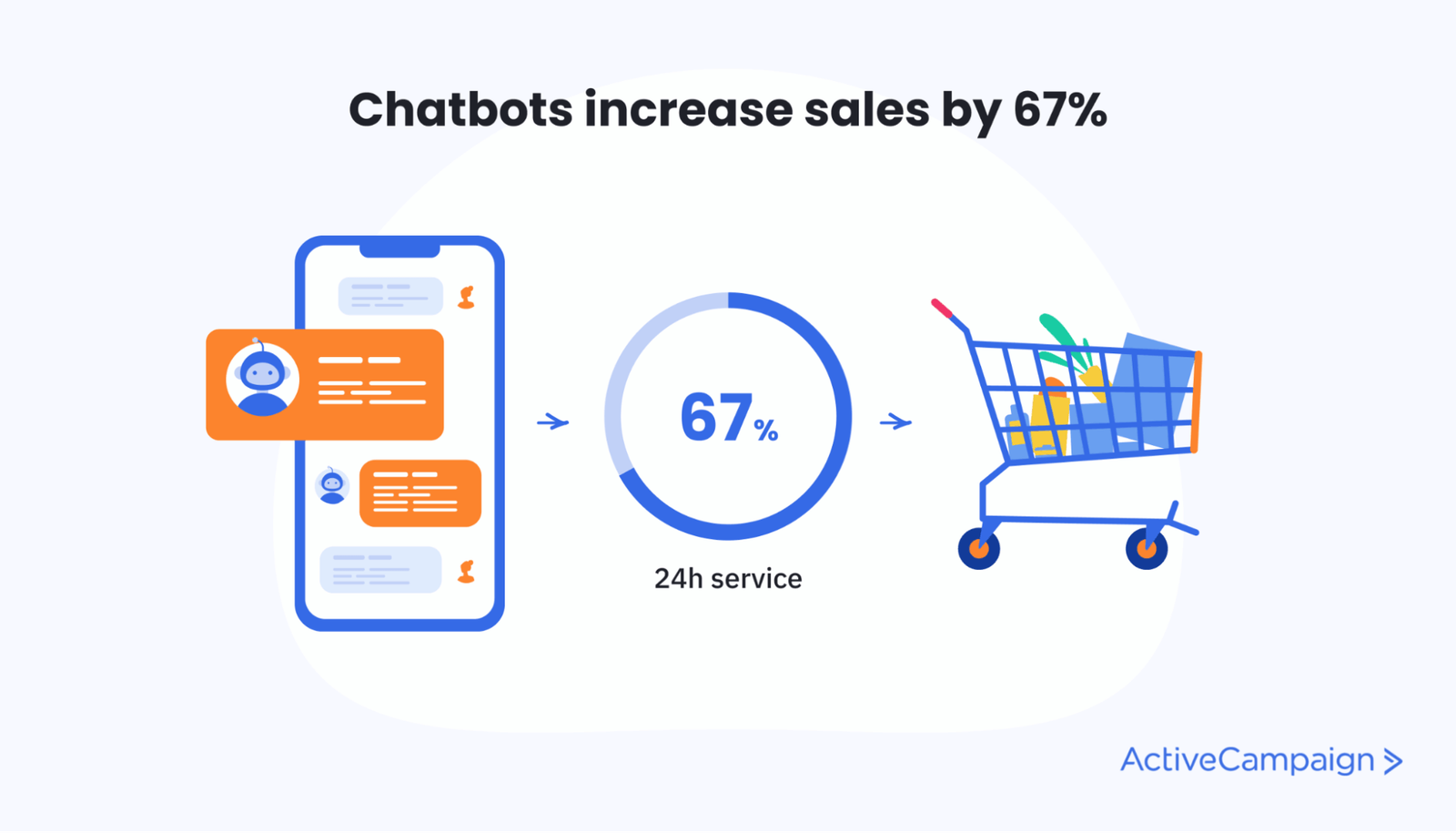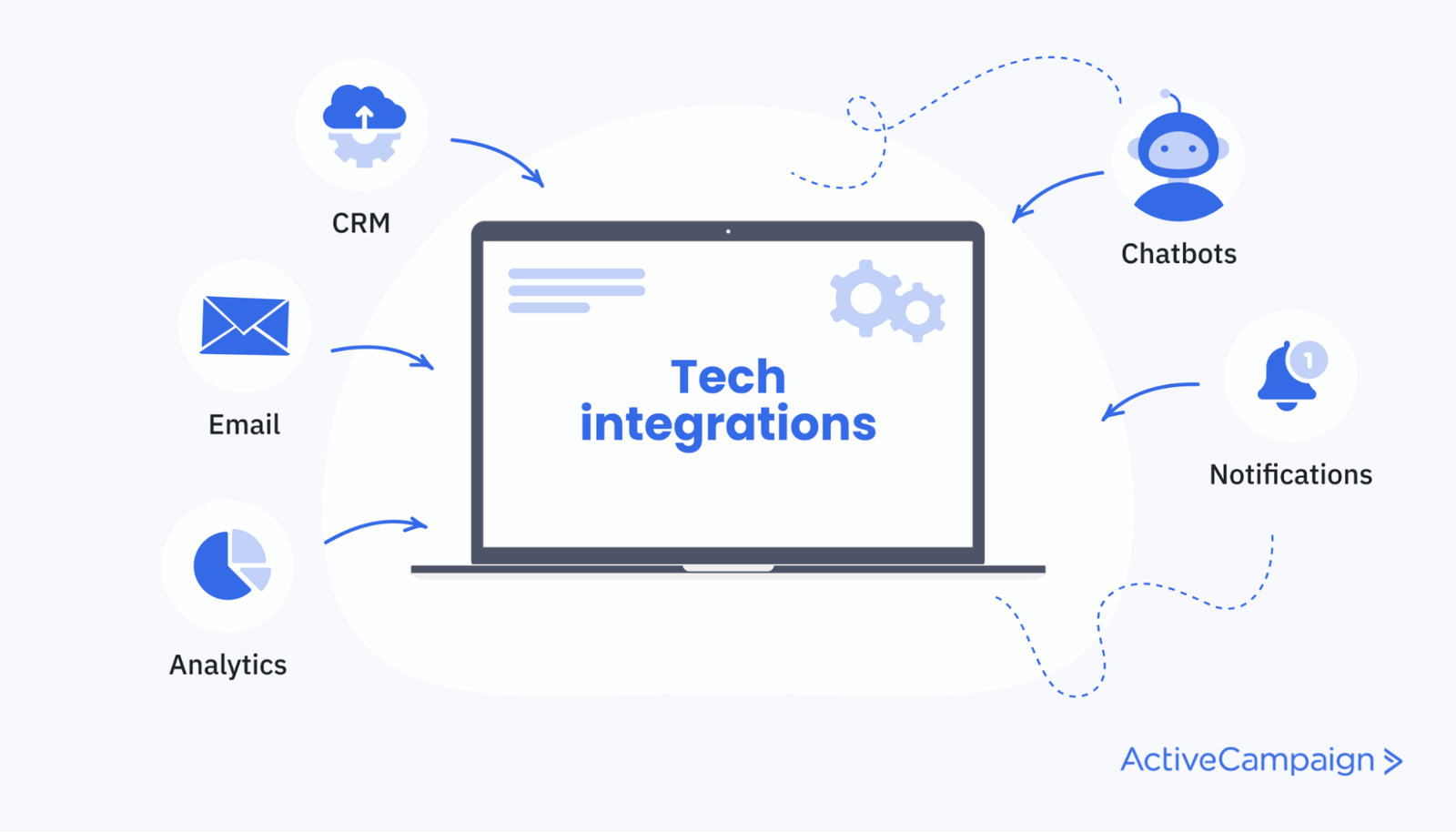When you're running a small business, every minute is valuable. You have a lot on your plate and only so many hours in a day to get it done.
Most small businesses waste time by not automating.
While 40% of large companies have automated processes in at least one business unit, only 25% of small businesses can say the same.
Many small business owners feel that automation is just for big corporations, but that couldn't be further from the truth. Research from McKinsey showed that while small businesses are less likely to invest in automation than large ones, they have more success when they do.
So, how can your small business get started with automation?
This article breaks down everything you need to know about automating a small business, including what processes to automate and how to pick the best automation platform.
What are the benefits of small business automation?
Small businesses are sometimes reluctant to invest in automation, but automating processes is a key advantage they have. 88% of small businesses say automation allows their company to compete with larger businesses.
Automation will allow your small business to scale its output without having to hire more people. Plus, automation tools enable you to be more data-driven and more effectively track your ROI, which is even more important for cash-strapped small businesses than it is for large corporations.
1. Automation saves your team time to focus on more valuable work
Office workers spend more than three hours per day on repetitive manual tasks. And 51% say that repetitive digital administration tasks get in the way of doing their main job.

Automation takes those tasks off of your team’s plate. With the most repetitive, boring responsibilities out of the way, employees can focus on the stuff they’re really good at — the strategic work that adds to your small business's bottom line.
2. Automation eliminates human error
Anyone who does the same task over and over will make a mistake eventually. For example, an Amazon Web Services outage in 2017 was caused by an employee mistyping a command during a routine debugging.
Automation software doesn’t make that kind of error. An automation tool completes a process the exact same way every time.
3. Automation enables data-driven decision making
Companies make better decisions when they have the data to back their choices. However, compiling and analyzing data and sharing reports is time-consuming if you have to do it manually.
Automation allows businesses to synthesize a large volume of information without doing a lot of extra work.
6 areas small businesses should automate (with examples)
You can automate just about any repetitive process. Here are a few common areas of automation where small businesses can get big results.
1. Lead and contact management
Dealing with leads and contacts manually can be a hassle. Consider replacing that complicated spreadsheet with CRM automation.
Sign-up forms
Sign-up forms on your website let potential customers opt into your subscriber list. Automation can take this information and automatically add it to your CRM and email marketing lists. Segment contacts based on how they signed up or immediately trigger a welcome email.
Lead scoring
Every interaction with a contact can increase or decrease their value to you. But that’s not something you want to worry about calculating manually.
A CRM platform can automate lead scoring and take action when a score changes. For example, it can notify you when a deal is heating up or trigger an email nurture campaign when a contact hits a certain score.
List segmentation
Segmentation of your contact list is key to sending personalized content.
You can do this automatically based on actions that a person takes. For example, you can automatically move leads into segments based on their deal stage.
Example of this automation in action
Social research, demographics, and data analytics agency McCrindle needed to increase their lead generation and conversion rate. It was important for the agency to personalize their engagements, but segmenting lists and creating content took hours.
Automation from ActiveCampaign allows McCrindle to offer a personalized and efficient customer journey.
When a customer takes an action within the funnel, the team automatically receives a tag and a lead score. This data is used to build a profile for each customer and provides details for list segmentation.
The result is personalized communication and an average 34% open/click rate on their campaigns.
2. Email marketing
Email marketing has an incredible return on investment (ROI). Businesses earn an average of $35 for every $1 spent. Email gives you a direct line to your audience and helps you build brand awareness.
But sending professional, personalized emails to all of your contacts regularly is more than most small businesses have time for. Email marketing automation software makes it easier.

Let’s take a look at a few types of automated emails you can send.
Welcome emails
The moment a contact joins your email list is the moment they’re most interested in what you have to offer.
Capitalize on that by sending an automatic welcome email — or a series of welcome emails. Thank them for signing up and nudge them toward taking an action of your choice.
Abandoned cart emails
Close to 70% of ecommerce shopping carts are abandoned. When a customer leaves their cart behind, the abandoned cart can automatically trigger an email reminding them to come back and purchase the items.
Birthday and anniversary emails
You can trigger emails based on the contact’s birthday or the anniversary of the day they joined your list. You might include a special offer to make the subscriber feel celebrated.
SureTriggers works easily with ActiveCampaign, allowing the users to automate email marketing campaigns, abandoned cart emails, birthday & anniversary emails, nurture prospects, and drive conversions through targeted and personalized contact.
Example of this automation in action
Morrow Audio manufactures and sells high-end audio cables and components. Founder Mike Morrow uses several email automations to get and retain customers.
For example, a two-email abandoned cart email campaign resulted in a 26% recovery of lost carts — that’s $30,000 in lost sales regained.
3. Social media
Social media automation includes automating your content to post on the social media platform at certain times. But the possibilities go way beyond that.
Social listening
Social listening refers to monitoring social media platforms and notifying you when someone mentions your brand. It’s especially useful if you’re on several social media sites and want a unified tool to listen to every channel.
Social media advertising
All major social networks allow paid advertising. You can reach a targeted audience in a space where they already spend time.
Managing ads can be a hassle, though.
Integrations
You also can integrate your social following with your other processes. For example, you can automatically pull social media leads into your CRM.
Example of this automation in action
Yes, Supply is a personal development and coaching platform founded by Reese Evans.
Evans collects contacts by offering free training on her site. Visitors who opt in get five days of free content, after which they receive emails to sign up for a masterclass.
If they don’t sign up right away, Evans uses ActiveCampaign + Facebook Custom Audiences to retarget the leads on social media.
4. Notifications and updates
Notifications are a type of automation that has big benefits, like increased efficiency and speed.
Automatic notifications give you updates on critical events, so you take action immediately. For example, your sales team could get notifications when a deal’s status changes. No time is lost in responding to the change.
Example of this automation in action
Sneleentaxi uses ActiveCampaign CRM to manage leads and prospects. Notifications are key to landing deals with larger companies.
When a non-consumer email is used, a sales rep is notified, so they can follow up with that business as a potential partner.
5. Customer support
Small businesses care about their customers and are committed to offering the best support possible.
But it’s not easy. You have a small staff — or no staff — and support issues come in at all hours on a variety of channels.
Automation can help.
Ticket assignment
Regardless of the channel the customer uses, support tickets can be routed to the right person promptly.
This automation saves employees from having to sort through emails, Facebook messages, phone messages, and chats to find and answer high-priority questions.
Chatbots
Chatbots have become increasingly popular in customer support. While chatbots sometimes get a bad reputation for their not-quite-human interactions, they can help small businesses provide great service.

They’re always on call, they respond immediately, and if a question is too complex to answer, they can transfer the customer to a human agent.
Chatbots have been shown to increase sales by an average of 67%.
Example of this automation in action
Your Therapy Source is an online therapy resource that uses ActiveCampaign for small business marketing automation. It’s important to founder Margaret Rice to provide top-notch customer service.
YourTherapySource keeps customers satisfied with the Conversations feature. Conversations provide cross-channel customer support messaging with both automated and live chat capabilities.
When a customer contacts Your Therapy Source, the message is sent directly to Rice’s phone so she can respond immediately.
6. Reporting
You need to have a big-picture view of what’s happening in your company, and you need to know whether your marketing and sales efforts are paying off.
Unfortunately, manually compiling the necessary reports can waste valuable hours. It’s time to move on from Excel graphs and generate reports automatically.
Example of this automation in action
Let’s go back to McCrindle.
McCrindle uses CRM reporting to get 360-degree visibility into the customer journey through the pipeline. They can break down their data by pipeline, product, product family, and persona to see a combination of the big picture and granular data.
Small business automation implementation
Businesses of all sizes benefit from automation, but getting started can be daunting. Here are a few steps you can follow:
Step 1: Identify automation opportunities
First, audit your existing processes and make a list of what to automate. Don’t worry yet about how you’re going to do it.
Talk to your employees about which tasks are taking up most of their time. The best candidate for your first automated process will be something tedious and repetitive.
Start with the easy processes and then expand. For example, maybe you spend way too long entering leads onto a spreadsheet. Using a CRM to automatically generate leads from form fields is a simple step that will free up a lot of time.
Step 2: Choose automation tools
Now, it’s time to choose the tool to do it.
Ideally, you’ll choose business automation tools that can streamline multiple critical processes in your organization. Make a shortlist of automation software you’re interested in and schedule demos with the vendors.
Go into the demos with knowledge of your budget and a list of features you need (as well as some nice-to-haves).
Step 3: Track and analyze
Reporting features give you insight into your business operations and help you make data-backed decisions. Make sure your automation software can provide helpful analysis.
For example, an email marketing automation platform will show you stats on your campaign performance, and a CRM should help you understand your pipeline status.
Analytics are important for improving your automated processes in the future. For example, you can see which type of automated email gets the most engagement and use that insight to adjust your other automations.
How to choose an automation platform for your small business
The most important factor is that the software does what you want it to do. Make a list of the features you need before you set up any product demos.
Here are a few things to look for:
Price
For small businesses, price is always a factor. That doesn’t mean the cheap option is always best. Look for software with small-business-friendly pricing — that is, the basic plan is affordable, but it also has advanced features you can grow into.
Integrations
Also, consider the integrations each tool offers. The more that your automation software can work with your existing tech stack, the more efficient your business will be.
Scalability
Think about the processes you want to automate today and the ones you’ll want to automate tomorrow — you don’t want to invest in a tool that’s too limited for your future needs.

Small business automation with ActiveCampaign
Automation streamlines your processes and makes you more competitive — especially if you’re a small business.
ActiveCampaign’s marketing and CRM automation solutions are ideal for small businesses: affordable, intuitive at any level of expertise, and ready to grow with you.






